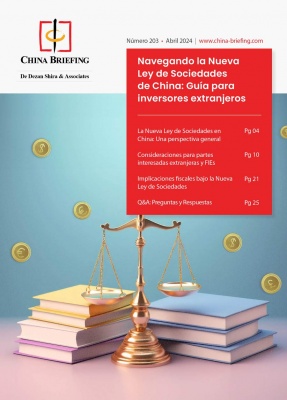Reminder to Account for Urban Construction Tax and Education Surcharge from Dec. 1
By Josh Silverman
SHANGHAI, Dec. 1 – As of today, all foreign-invested enterprises are obligated to pay the urban construction tax and education surcharge. These taxes have been applied to local businesses since 1985 and 1986, respectively, and will now be applied universally as part of the government’s program of tax unification.
Until now, FIEs have been exempt from paying these taxes as a way to attract foreign investment. However, in guofa 35, an amendment to the national law, the State Council directed that the exemption be lifted as of December 1, 2010. This means that a business will pay the additional taxes in January for income derived from the month of December.
The urban construction tax rates are set at 7 percent, 5 percent and 1 percent of a company’s turnover tax depending on whether the business is located in a city, county town or a place other than a city or town. The education surcharge is fixed at 3 percent of a company’s turnover tax. The turnover tax consists of value-added tax, consumption tax and business tax. We can see that these are surtaxes as they are levied as a percentage of the combined total of other taxes. Therefore, the total amount of tax is likely to be small compared to other taxes that the company pays. In all, the taxes can be up to 10 percent of a company’s turnover taxes or 1 percent of the net turnover of a company. They will be paid monthly along with VAT, CT and BT.
While the two taxes will likely make a minimal impact to a company’s bottom line, they are of interest when seen in a larger perspective. The reasoning behind the government’s decision to lift the exemption can be drawn from China’s entry into the WTO in 2001. As part of China’s accession into the organization, the country agreed to implement a policy of tax unification. The purpose of the policy was that FIEs were to be given market access in return for “national treatment.” It has taken nearly a decade, but the country has finally fulfilled its obligations.
In a timeline of tax unification, we can see that China entered the WTO in 2001; drafted its first legislation on tax unification in 2004; unified the corporate income tax in 2008; unified the real estate tax in 2009; and is now unifying the remaining surcharges by lifting the exemption for FIEs. With the two surcharges now being applied to FIEs, the process of tax unification for businesses is complete. For individuals, only the individual income tax remains separated.
The urban construction tax and education surcharge are both collected at the local level and the funds will be used for projects in the local community. Despite being issued by the State Council, it is ultimately up to the local tax bureau to implement the taxes and determine how they will be assessed. For example, in Shenzhen the urban construction tax is levied at 1 percent despite Shenzhen being a city. After contacting local tax authorities, DSA learned that Shanghai has decided to implement the policy as written in guofa 35, but Suzhou has not yet formalized its policy on assessing and collecting the taxes. It will be the responsibility of the business to verify the policy with its local tax authority.
Viewed one way, these taxes are placing a greater tax burden on FIEs. However, seen in another light they should be regarded as putting more transparency and clarity into the Chinese tax system. The urban construction tax and education surcharge are merely two pieces in the greater theme of tax unification, a policy necessitated by China’s entry into the WTO. It has been known for some time that these taxes would eventually be imposed on FIEs and there are unlikely to be future taxes that will apply to either domestic or foreign enterprises, but not the other. Policies regarding business operations have only become more predictable since China entered the WTO, making it easier for companies to plan for the longer term.
For advice over tax matters in China, please contact Dezan Shira & Associates at info@dezshira.com. The firm’s brochure may be downloaded here.
- Previous Article New Issue of China Briefing: The Asia Trade, Labor and Tax Comparator
- Next Article Recent Asia Regional Updates for China Outbound Investors
























